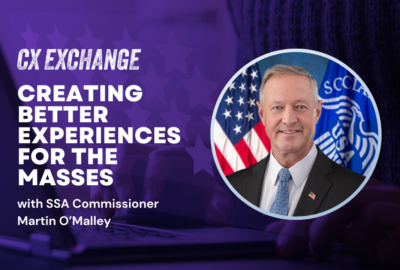Hubbard Radio Washington DC, LLC. All rights reserved. This website is not intended for users located within the European Economic Area.
On Air: Federal News Network
Trending:
Inside the world’s biggest buyer
All week long, Federal News Radio presents a multimedia special report on the changing face of acquisition. Throughout the series, Inside the World's Biggest...
The federal government has spent almost a billion dollars on lumber, plywood, millwork and veneer so far this year.
Agencies shelled out another $4 billion on books, maps and other publications.
And they spent another $883 million on railway equipment in fiscal 2012.
This is all on top of the $500 billion spent on tens of thousands of other products and services ranging from IT to food preparation and serving, to explosives to lighting fixtures and lamps.
Basically, if someone sells it, the government probably buys it.
The federal government takes more than $1 trillion a year to operate and nearly half of its operating budget is spent on the acquisition of goods and services — more than $1 out of every $6 agencies spend goes to contractors.
So just how good is the world’s biggest buyer? All this week Federal News Radio will try to answer that simple question in a five-part multimedia special report, Inside the World’s Biggest Buyer.
Federal acquisition spending has increased to more than $535 billion in fiscal 2011 from about $200 billion in 2000, according to the Office of Management and Budget. And with that huge increase, the complaints, the examples of waste, fraud and abuse, and overall problems have become more prevalent.
Congress, executive branch political leadership and career federal managers all agree: federal acquisition needs to be a lot more efficient and effective.
But just looking at the last three years, the White House and lawmakers have used a slew of executive orders, policy memoranda and legislation to reform acquisition — leaving the reform process to become messy and uncoordinated.
The Obama administration has led efforts to improve contracting on several fronts: reducing high-risk acquisitions such as time-and-materials or labor hours type contracts, reducing management support services deals and trying to take advantage of the size of the government through strategic sourcing.
Congress, not to be left out, also has been trying to take on problem areas, such as contingency contracting, the amount of money going to small businesses and the ongoing need to improve the acquisition workforce.
Each day this week, we will try to address a different aspect of acquisition, starting Monday with agency procurement and the challenges around everything from developing requirements to hiring the best vendors to managing the vendors after the initial award.
On Monday, we talk to Mary Armstead, the program director of the National Institutes of Health IT Acquisition and Assessment Center. NIH recently awarded its third generation governmentwide acquisition contract (GWAC), called CIO-SP3. Armstead explains how the environment for GWACs has changed over the last decade.
We also, for the first time, bring together former administrators of the Office of Federal Procurement Policy — Steve Kelman and Al Burman — to discuss how buying has become more complex amid a partisan environment and what can be done to improve it across the government.
A contracts administrator at the Los Alamos National Laboratory explains in one of our special columns, how the Defense Department’s Rapid Acquisition Program provides speedy capabilities to warfighters.
Meanwhile, former deputy undersecretary of Defense for Industrial Affairs Steve Grundman provides his perspective on how the Better Buying Power initiative has shaped defense procurement.
Plus, the Government Accountability Office’s controller and administrative services officer, discusses the ways GAO helps agencies get the most out of the acquisition process.
Senior Correspondent Mike Causey provides his own take on the world of federal acquisition in the first of two special columns.
And finally, we take an in-depth look at strategic sourcing and the detrimental impact some small firms say it’s having on their businesses.
New OFPP Administrator Joe Jordan, in his first interview since being confirmed, discusses the top priorities of his new role, including building up the federal acquisition workforce and “buying smarter.”
The General Services Administration’s Steve Kempf, the commissioner of the Federal Acquisition Service, explains how agencies are taking a more disciplined approach to managing vendors through the use of a special survey.
Plus, National Defense University professors Andy Gravatt, chairman of the Systems and Technology Department, and Dr. Russ Mattern, a professor in the same organization, discuss how they are improving the training for Defense Department 1102s.
You’ll also get a first-ever look at how DoD and State Department employees managed the transition of power in Iraq — one of the largest overseas logistical operations since World War II. We talk with DoD’s Gary Motsek and State’s Catherine Ebert-Gray, the two people who led the transition in the special section Trial by Fire: Overseas Contracting in Transition.
Retired Maj. Gen. Arnold Punaro, a member of the Defense Business Board, writes a special column about the shrinking number of military contracting officers has put the military at a disadvantage and lays out an improvement plan.
Also, check out Senior Correspondent Mike Causey’s column addressing the size of the acquisition workforce relative to federal procurement spending as well as a chart that shows the growth of the workforce since 2000.
On Wednesday, Congress, inspectors general and the Government Accountability Office have all increased their prodding and poking of agency procurement actions, causing some to say taking risks now more than ever is too risky, and that it is harming the ability of agencies to get state-of-the-art products and services.
Sens. Joseph Lieberman (I-Conn.) and Susan Collins (R-Maine), chairman and ranking member of the Homeland Security and Government Affairs Committee, warn against repeating mistakes made by the Defense Department in the 1990s. Then, budget reductions led to a slashing of the acquisition workforce. Lieberman and Collins argue against doing the same now.
Rep. James Lankford (R-Okla.), in a special column, says with 55 percent of the current workforce eligible to retire by 2018, agencies and Congress will have to work together to figure out how to train and retain employees.
Bill Woods, GAO’s director of Acquisition and Sourcing Management Issues, explains why keeping up with federal procurement rules and regulations is a full-time pursuit.
Jim Williams, a former commissioner of GSA’s Federal Acquisition Service, discusses how contract vehicles have proliferated across government and what that means for for procurement.
In part two of the special section on overseas contingency contracting, find out how DoD enacted reforms to wartime contracting as well as how State and DoD continue to share overseas contracting responsibilities, as evidenced by the budget.
And don’t miss our acquisition bill tracker, highlighting some of the major legislation with acquisition-related provisions that could affects agencies and industry alike. Plus, our acquisition timeline — which takes a look back at the legislation already in place today.
Part 4: Suspension and Debarment
Thursday, we turn our attention to suspension and debarment. One of the areas both Congress and OMB have turned the heat up on agencies to use more, and contractors to be wary of.
Congress has increasingly pushed agencies to suspend irresponsible contractors. Read more about that legislative push and how the effects of suspension and debarment on companies lingers.
Former OFPP administrator Rob Burton discusses the growing use of suspension and debarment and potential inequities in the system.
Lee Dougherty, a member of General Counsel, P.C.’s government contracts practice, has represented companies suspended by the government. He shares what happens when the acquisition process breaks down.
Experts say suspensions and debarments are not to be used as punishment of errant contractors but to protect the government from risk. David Sims, chairman of the Interagency Suspension and Debarment Committee and a debarment manager at the Interior Department, gives an overview of the use of suspension and debarment governmentwide.
Along with suspension and debarment, agencies must also deal with bid protests from companies who lose out on a contract and allege impropriety in the contract-award process. Steven Maser, a professor of public policy and administration at Willamette University, discusses how bid protests can actually help keep procurement honest.
Finally on Friday, we take a look from the industry perspective on how federal acquisition needs to improve.
Already, contractors are warning of possible layoffs due to potential budget cuts.
We look at the ever-growing concerns around the IT supply chain, and we hear from agencies and vendors about some of the best ways to keep counterfeit products and malicious code in software from harming federal systems.
Don’t miss our list of movers and shakers in the acquisition world — people you should know and people you ought to know — who are impacting the way agencies buy goods and services.
Bob Lam, former head of business development for Accenture Federal, offers his take on how agencies could improve the acquisition process for vendors.
Check out our special report on the Veterans Affairs Department’s contractor verification program. Some small-business owners say the process VA uses to ensure veterans are receiving contracts is actually shutting out some veteran business owners.
Todd Ramsey, the general manager of IBM Federal, busts some myths about the government’s Mythbusters campaign. While the program was designed to help industry and government communicate better, Ramsey says, from his perspective, there’s not enough talk or action.
And in the final part of the special section, Trial by Fire: Overseas Contracting in Transition, learn more about the central role of contractors in the State-Department-led mission in Iraq.
And finally, we want to hear from you, our listeners and readers. Tell us what you think is missing from this conversation, what areas of acquisition aren’t garnering enough attention by government, by Congress and by the media, and what’s actually working that many people don’t realize. Comment on our stories or email our reporters directly, or post a message to our Facebook page or our Twitter feed.
QUICK LINKS:
Inside the World’s Biggest Buyer (Main Page)
Part 4: Suspension and Debarment
Copyright © 2024 Federal News Network. All rights reserved. This website is not intended for users located within the European Economic Area.
Jason Miller
Jason Miller is executive editor of Federal News Network and directs news coverage on the people, policy and programs of the federal government.
Follow @jmillerWFED
Army commanders fail to adequately address all forms of harassment, DoD IG says
Related Topics





